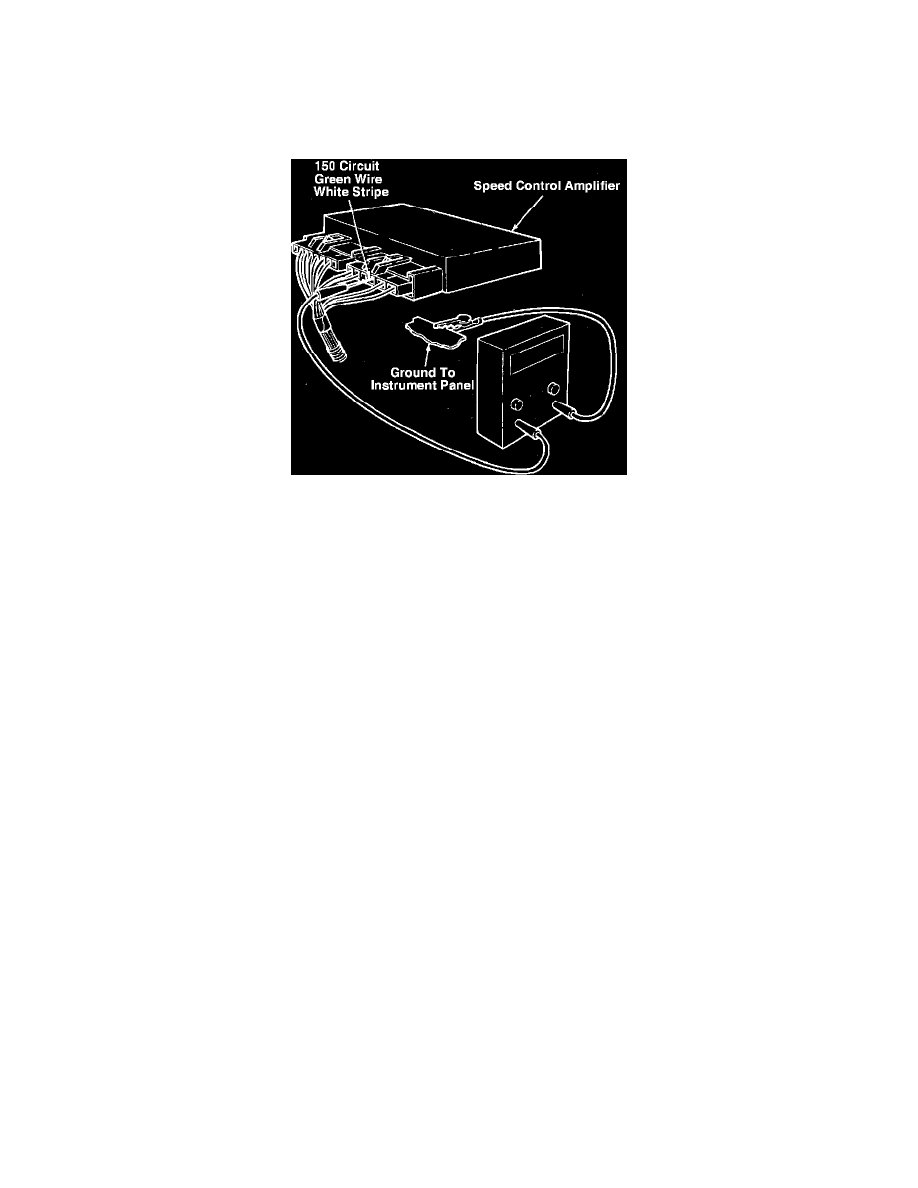Escort L4-98 1.6L SOHC VIN 5 FI (1985)

Vehicle Speed Sensor/Transducer - Cruise Control: Testing and Inspection
ANALOG INSTRUMENT CLUSTER
1. Disconnect electrical connector from speed sensor and connect an ohmmeter between the speed sensor terminals at speed sensor end.
2. A reading of approximately 30---100 ohms for 1982 models and 1983 Escort, EXP, LN7 and Lynx or approximately 200---300 ohms for
1983---87 models should be obtained. A reading of 0 ohms indicates a shorted coil and maximum reading indicates an open coil.
3. Replace the sensor if a correct reading has not been obtained.
Speed signal test
ELECTRONIC INSTRUMENT CLUSTER
NOTE: On vehicles equipped with an electronic speedometer, the speed signal is provided by the electronic speedometer rather than the speed sensor.
Do not perform the speed sensor test on vehicles equipped with an electronic speedometer.
1. Connect an AC voltmeter to terminal 150 and the ground leads to the amplifier.
2. With the wheels raised and the vehicle speed at 48 kph (30 mph), the AC voltmeter should read approximately 6-24 volts.
3. Measure DC voltage at the same terminal at 48 kph (30 mph). If voltage is greater than 1 volt DC, replace the speedometer.
4. Disconnect the 6 pin connector at the amplifier and repeat step # 2. If the reading is greater than 6 volts, replace the speed control amplifier.
5. Check circuit 150 (DG/W) from speed control amplifier to speedometer for shorts to ground or battery.
